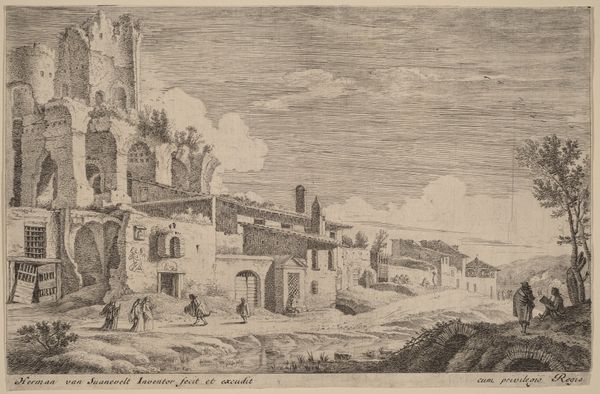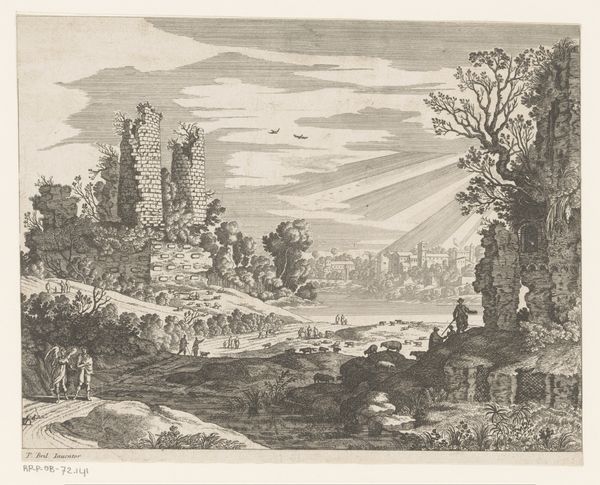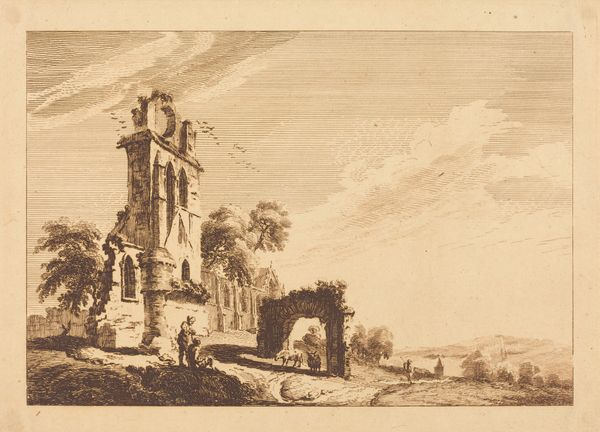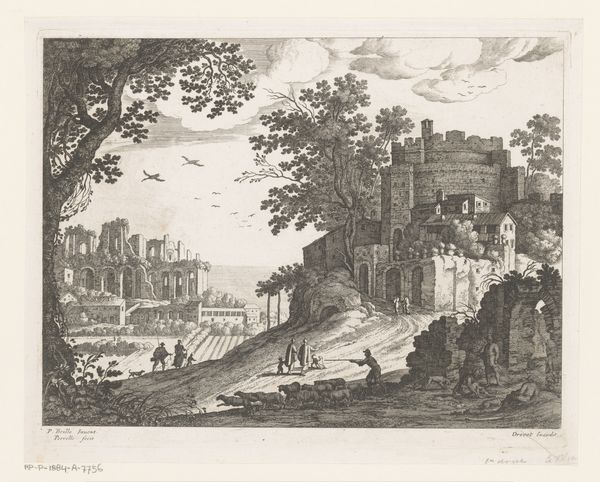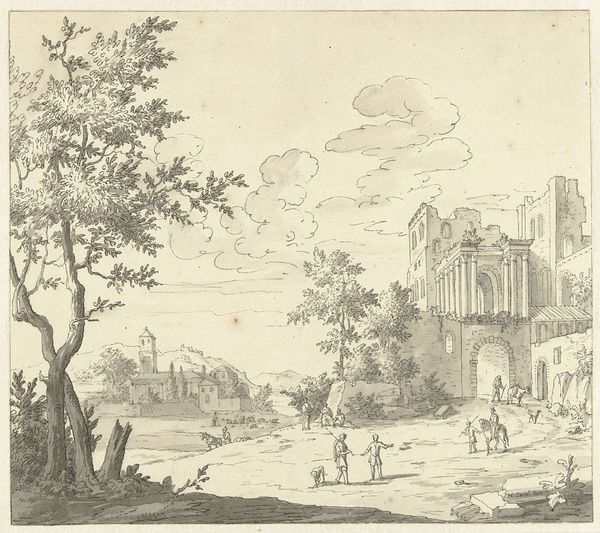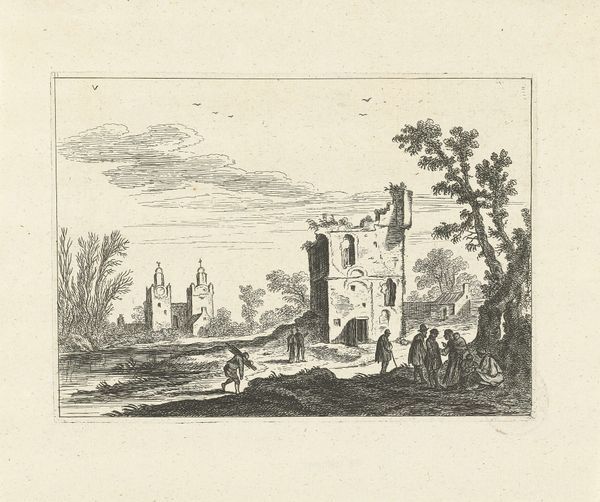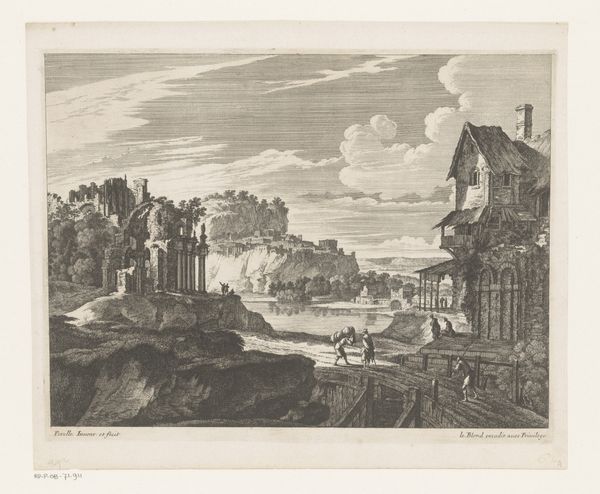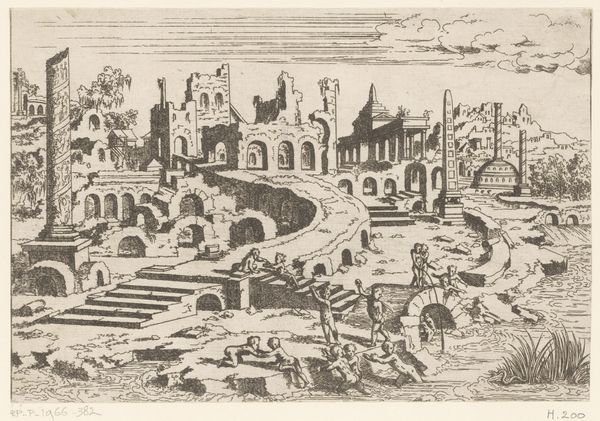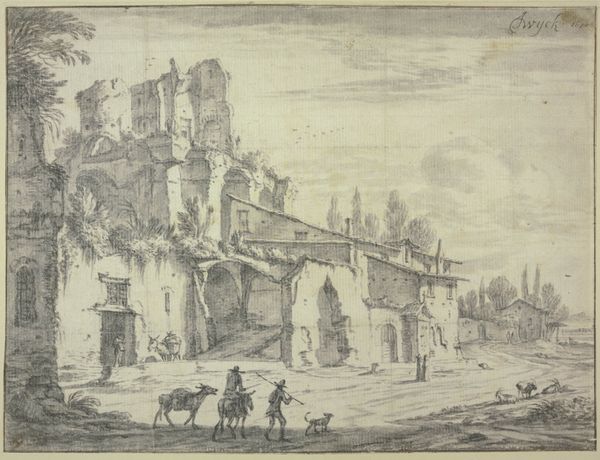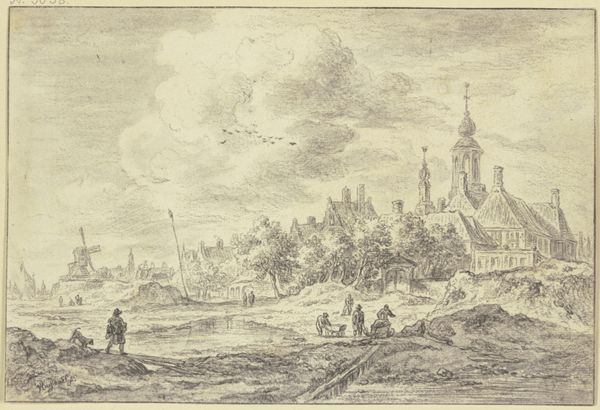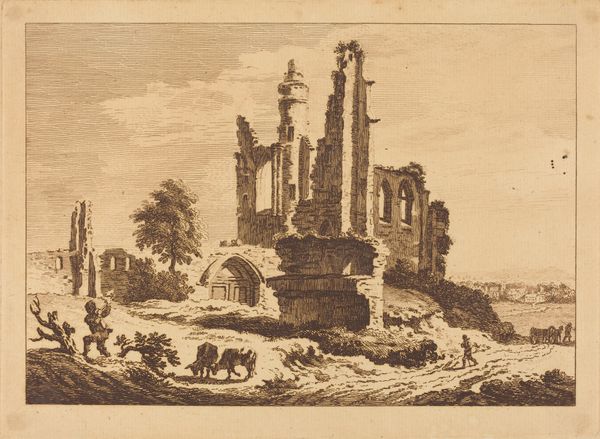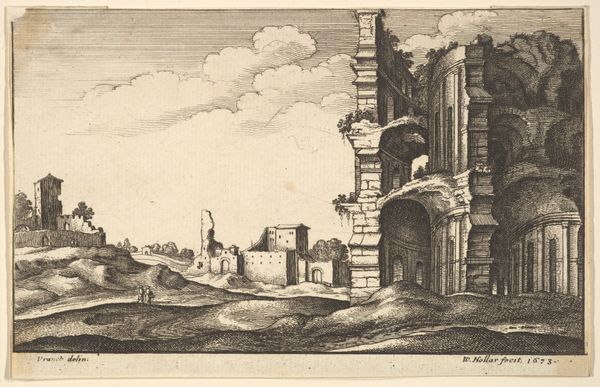
print, etching
#
baroque
# print
#
etching
#
landscape
#
figuration
#
pencil drawing
#
history-painting
Copyright: National Gallery of Art: CC0 1.0
Curator: Herman van Swanevelt's etching, "Landscape with Ruins and a Woman with a Parasol," presents a fascinating interplay of nature and classical decay. What’s your immediate take? Editor: Immediately, the dominating architectural structures exude a sense of melancholic grandeur, don’t you think? The tight etching lines lend a tangible textural depth. I appreciate how the scale diminishes into the background, with the cloud feeling closer in plane to the structures than perhaps they really are. Curator: Indeed. The architecture provides a fascinating contextual framing device. Ruins, during this era, represented the transience of power, of even entire civilisations. Van Swanevelt presents not simply buildings, but the consequences of time and perhaps also shifting power structures. How does the figure with the parasol resonate within that space, do you think? Editor: It injects an element of social narrative. The artist places figures directly adjacent to his ruin to heighten a sense of drama – history acting as backdrop to the people that came next. They're literally under the umbrella of history, traversing through a scene of former greatness. Perhaps their nonchalance hints at a contemporary detachment from classical ideals? It raises questions of cultural memory. Curator: It also highlights the continuous transformation of landscape and experience. Notice the intricate, almost obsessive detailing in the foreground vegetation in contrast to the hazier, less defined rendering of the ruins themselves? This tonal contrast forces our eyes upward from where our narrative journey starts. Editor: Yes, the foreground details function to ground us in the present while simultaneously leading us into a consideration of the past. The inclusion of livestock only heightens the feeling of integration within that scene: the mundane animals in stark contrast to the ruined palace. Curator: There’s also a marked dialogue in texture itself, given the linear quality of the hatching employed in the sky which runs almost to the horizon. Van Swanevelt forces an integration between the built structures and nature that implies, perhaps, the two are almost in collaboration. It’s very much of its time in that sense. Editor: It is precisely the tension between decay and the vivacity of the etching, between symbolic and everyday, which constitutes the piece’s dynamism, making it much more than just a picturesque scene, wouldn’t you agree? Curator: Absolutely. The intersection of structure, landscape and people forms a commentary on both human and structural fragility, inviting us to consider our place within history’s unfolding narrative. Editor: And a visual testament to the power of art to compress epochs into a single view, using contrast of structure to allow that commentary.
Comments
No comments
Be the first to comment and join the conversation on the ultimate creative platform.
